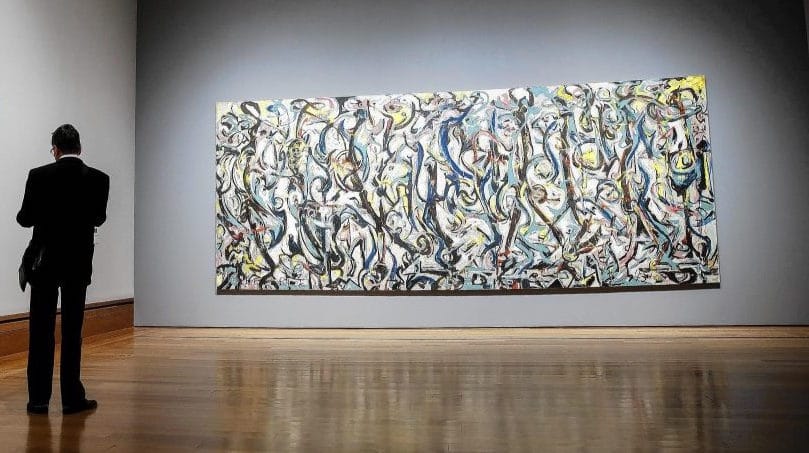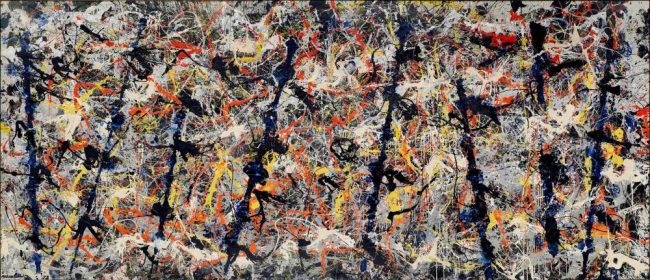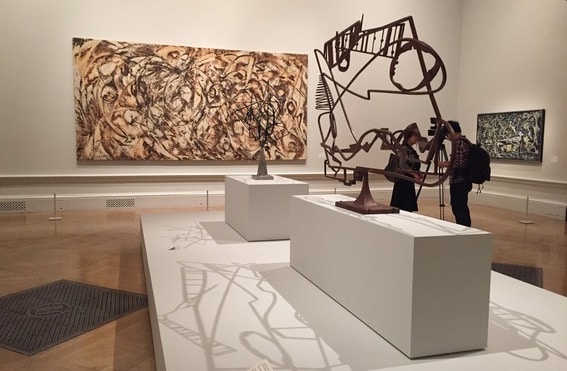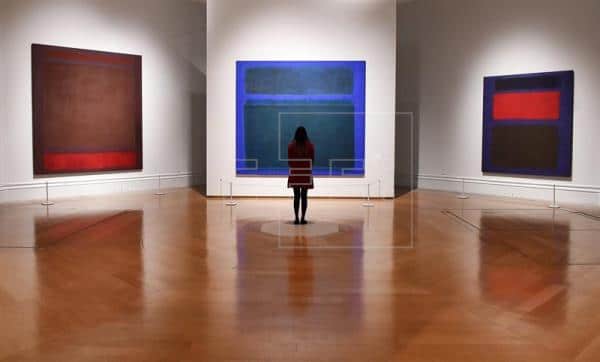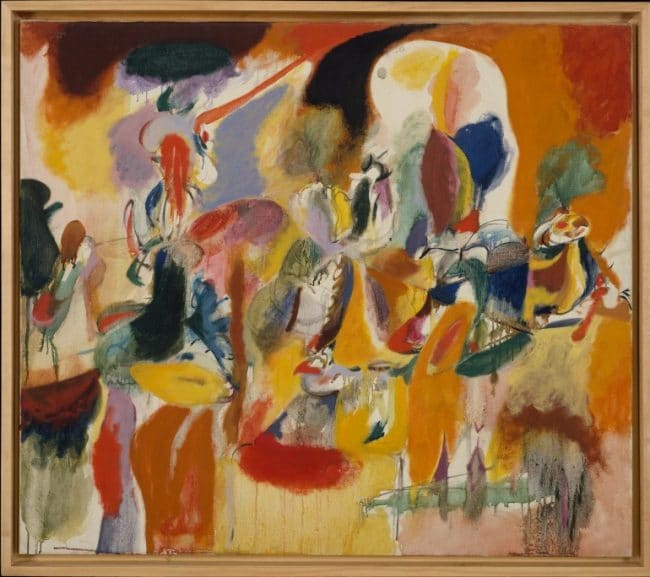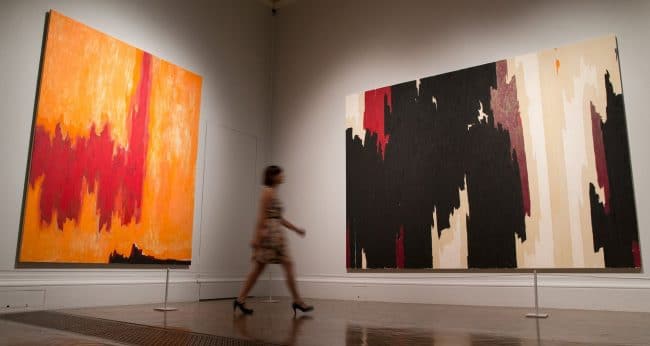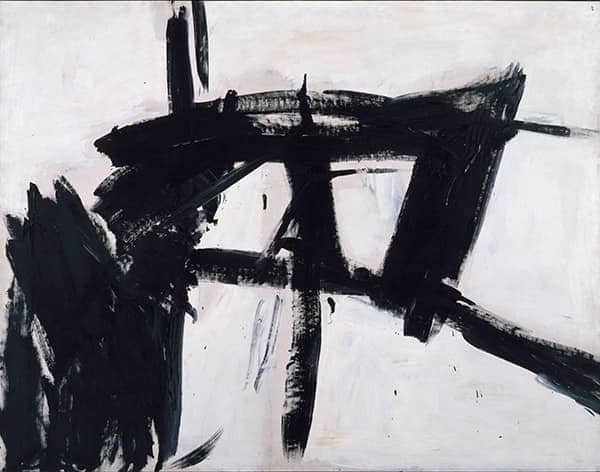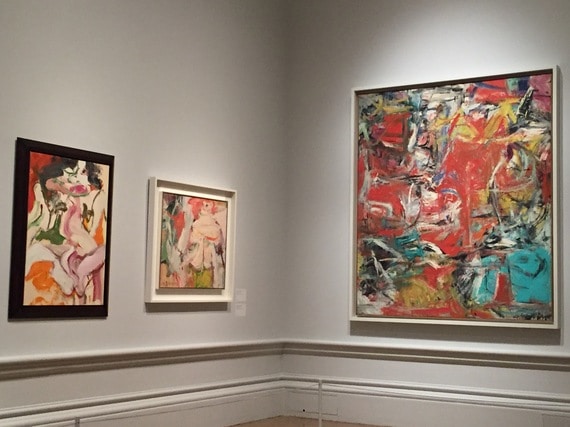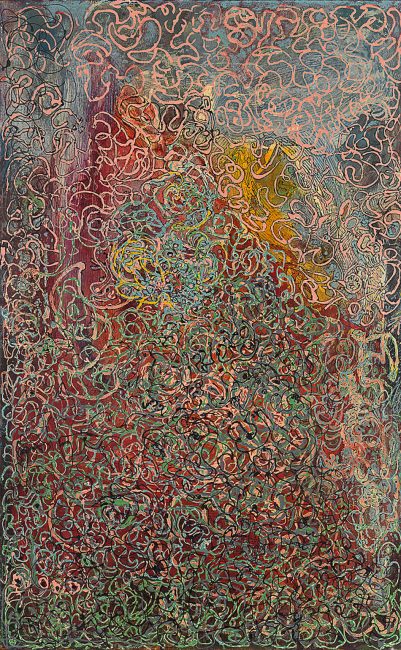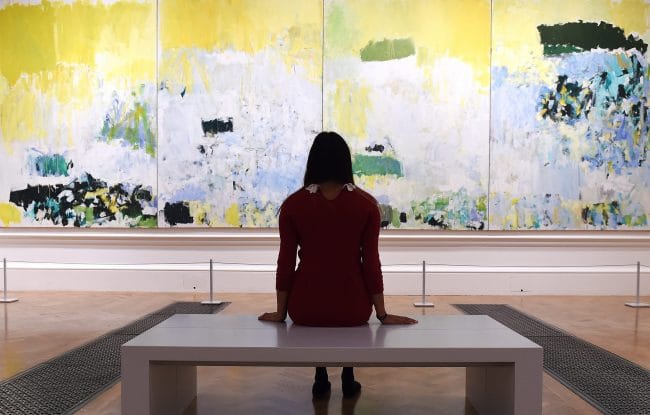Abstract Expressionism was a watershed moment in the evolution of 20th-century art, yet remarkably, there has been no major survey of the movement since 1959.
It is a movement that has been tainted with the political interference of the American Government who sought to position the movement, and by association, the country at the heart of creative and artistic world during the cold war (excellent Independent feature here.) Were we all ‘conned’ in to believing that these artists were better or more interesting than they perhaps really were?
Most emphatically the answer is no. This glorious exhibition should be an eye opener to those who have grown up with a predominance of conceptual, performance and installation art and the idea that painting was deeply unfashionable.
The Royal Academy looks at this the “age of anxiety” surrounding the Second World War and the years of free jazz and Beat poetry; artists like Pollock, Rothko and de Kooning broke from accepted conventions to unleash a new confidence in painting.
The scale of the works was a revelation as was their intense spontaneity. At other times they are more contemplative; presenting large fields of colour that border on the sublime. These radical creations redefined the nature of painting, and were intended not simply to be admired from a distance but as two-way encounters between artist and viewer.
The exhibition begins wth some fascinating early smalls scale works from the major players, followed by a room dedicated to Arshile Gorky, an acknowledged forerunner of the movement.
The largest gallery is given over to Jackson Pollock with an impressive display of some rarely lent works.
‘Gesture as Colour’ is the theme of another room that is once again full rarely lent works. This time by Clyfford Still who employs great fields of colour to evoke dramatic conflicts between man and nature taking place on a monumental scale.
For ‘The Violent Mark’ we get some fabulous canvases from Franz Kline, before other rooms largely filled with Willem de Kooning, Mark Rothko and Barnett Newman.
Right through the exhibition a series of fine David Smith sculptures effectively tie the rooms together and provide respite from the huge canvases. Appropriately he often said “I belong with the painters” and considered that his work was painting rendered in 3D.
Sadly however, historically peripheral and unfairly overlooked figures remain that way. The RA offers no insightful re-assesment of these artists, especially female. The suspicion remains of establishment misogyny and a movement whose defining elements are frozen in time and too well established to even be discussed.
We have one abstraction by Janet Sobel, who may have influenced Pollock, there are few by Lee Krasner, Pollock’s wife, whose career was long overshadowed by his. Joan Mitchell is only represented in passing.
Despite this minor criticism, this is a tremendous exhibition providing a long overdue look at a movement that has has rather unfairly been deemed unfashionable. Don’t miss it.
For more information visit www.royalacademy.org.uk




